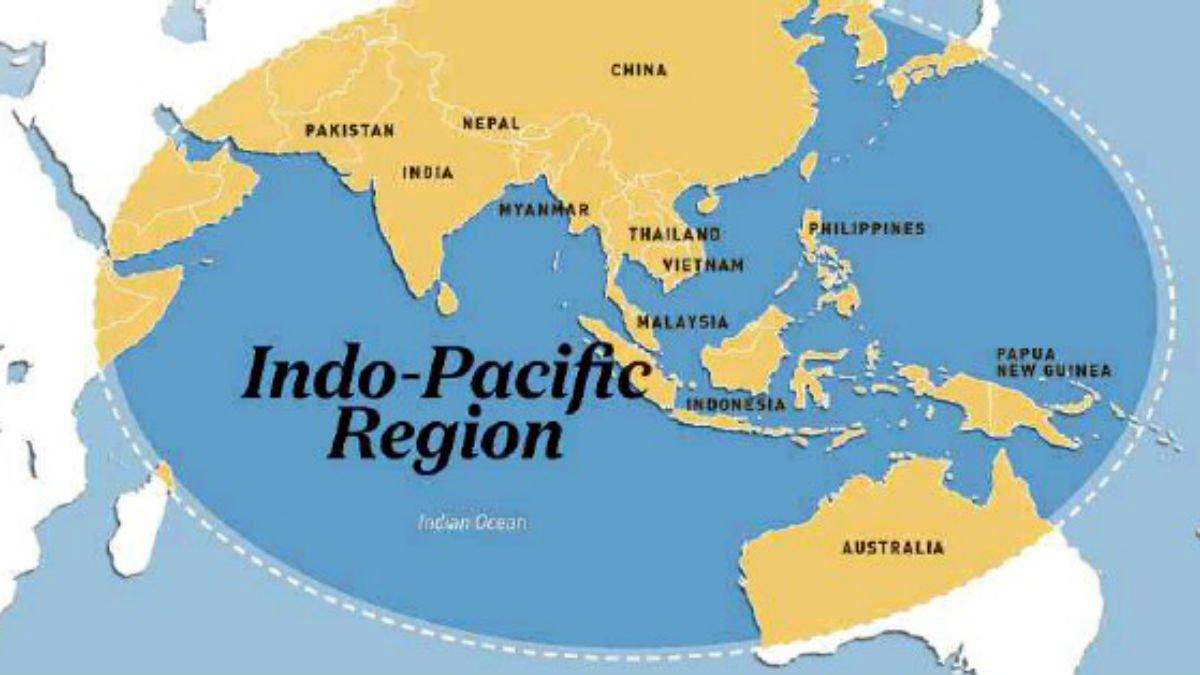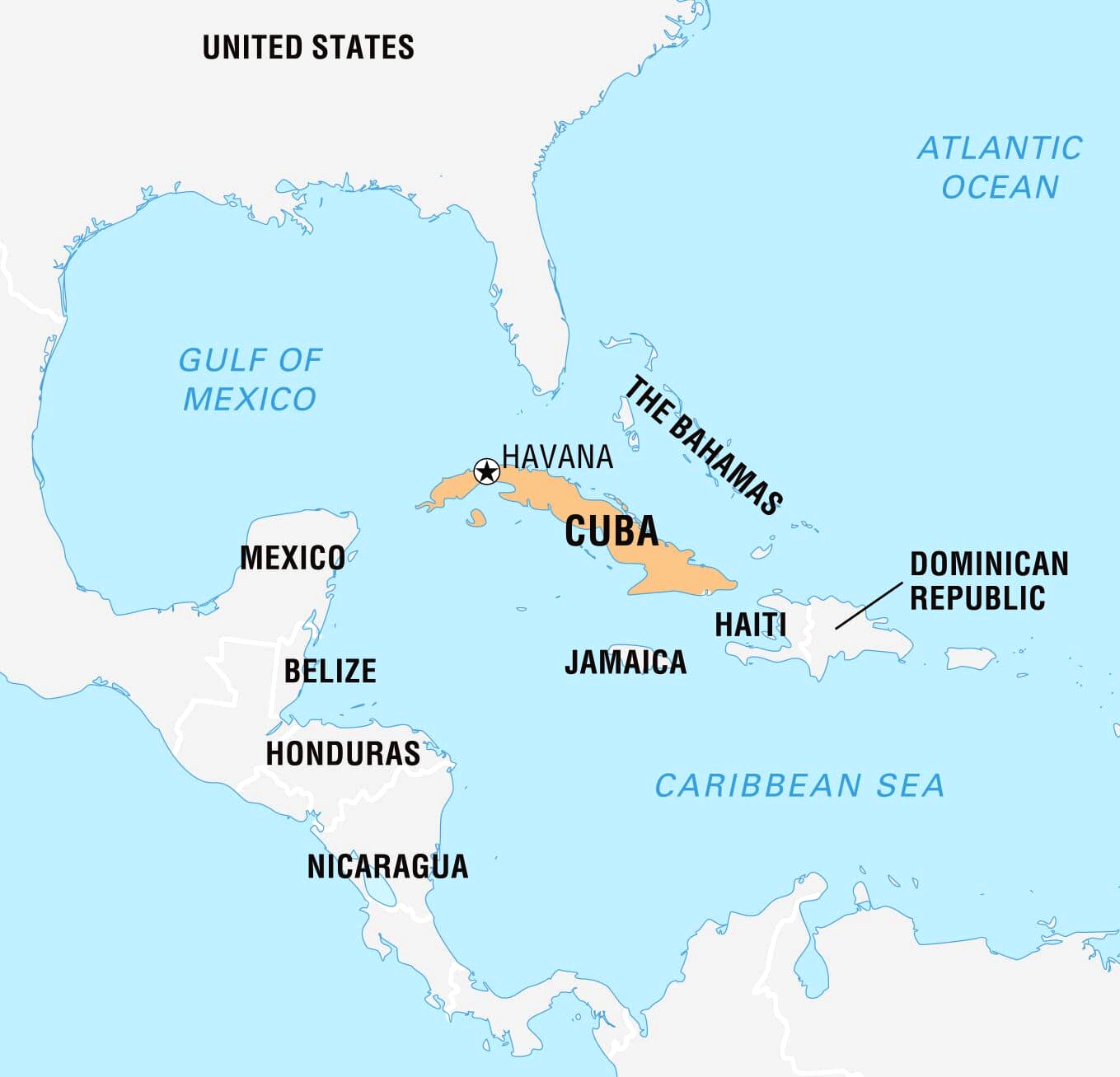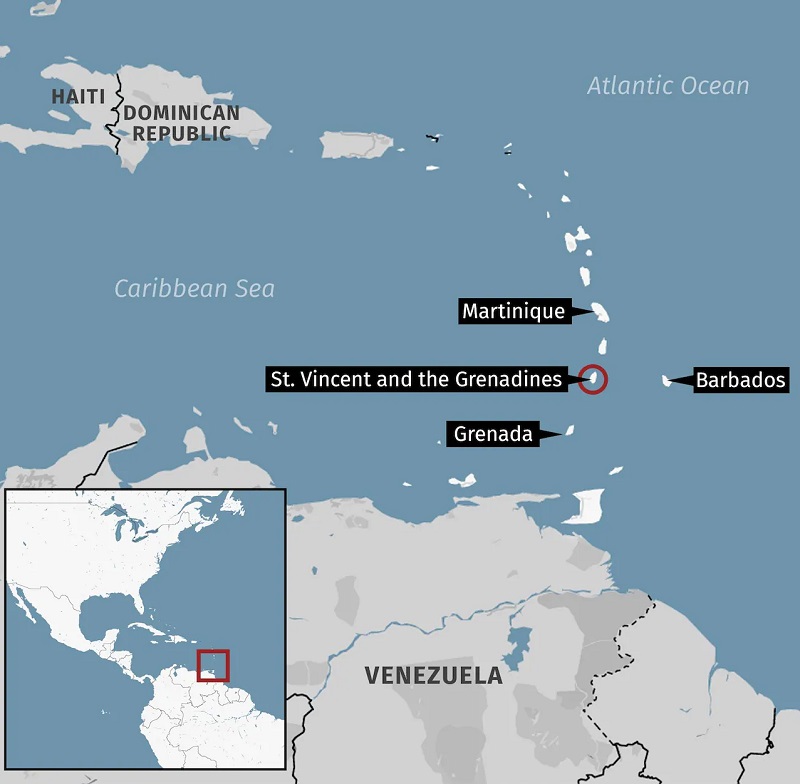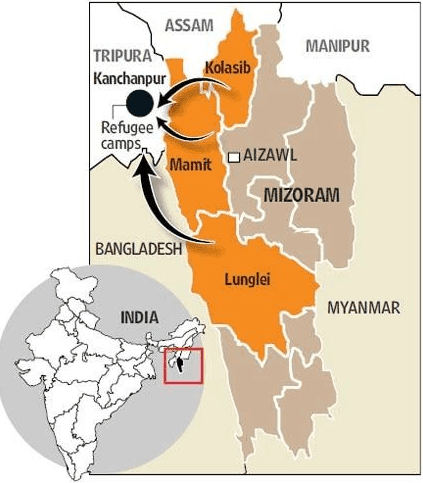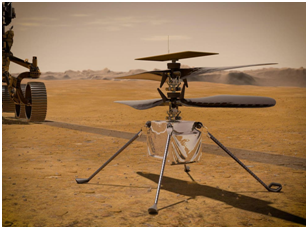International Relations
EU & Indo-Pacific
Why in News
Recently, the European Union (EU) approved conclusions on a European Union strategy for cooperation in the Indo-Pacific.
- The renewed EU commitment to the Indo-Pacific will have a long-term focus and will be based on upholding democracy, human rights, the rule of law and respect for international law.
- Indo-Pacific is a region spanning from the east coast of Africa to the Pacific island states.
Key Points
- Need:
- Intense geopolitical competition adding to increasing tensions on trade and supply chains as well as in technological, political and security areas.
- Human rights are also being challenged. These developments increasingly threaten the stability and security of the region and beyond, directly impacting on the EU’s interests.
- Aim:
- To contribute to regional stability, security, prosperity and sustainable development at a time of rising challenges and tensions in the region.
- Promoting rules-based multilateralism, giving centrality to ASEAN (Association of SouthEast Asian Nations), a point also stressed by India.
- Main Features of the Strategy:
- Covid-19:
- The EU will work together in order to mitigate the economic and human effects of the Covid-19 pandemic and work towards ensuring an inclusive and sustainable socio-economic recovery.
- Free and Fair Trade:
- The EU’s approach and engagement will look to foster a “rules-based international order, a level playing field, as well as an open and fair environment for trade and investment, reciprocity, the strengthening of resilience, tackling climate change and supporting connectivity with the EU.
- On trade partnerships, the EU will aim to conclude free trade agreements with Australia, Indonesia and New Zealand and take further steps towards the Comprehensive Agreement on Investment with China.
- It will also continue to explore deepening economic relations with India.
- Security and Defence:
- It will continue to develop partnerships in the areas of security and defence, including to address maritime security, malicious cyber activities, disinformation, emerging technologies, terrorism, and organised crime.
- It has taken the decision to extend the geographic scope of its CRIMARIO (Critical Maritime Routes) II activities from the Indian Ocean into South and Southeast Asia with a view to contribute to safer sea lanes of communication with the EU.
- CRIMARIO:
- The EU Critical Maritime Route Wider Indian Ocean (CRIMARIO) project was launched in 2015 to improve maritime security and safety in the Wider Indian Ocean, with a particular focus on selected countries and archipelagos in East Africa, it aims to support countries in the region to enhance their Maritime Situational Awareness (MSA).
- CRIMARIO:
- Covid-19:
- Role for India:
- Increasing competition, power rivalry, unilateral actions challenging the multilateral order and international laws are some of the common concerns shared by India and Europe.
- With an enhanced focus on their strategic relations and engagement with other like-minded regional players, India and EU can play a significant role in preserving an open, free, inclusive and rules based order in the Indo-pacific.
- India’s recent engagement with European powers in Indo-Pacific:
- India’s support for France’s membership of the Indian Ocean Rim Association (IORA).
- India’s backing for a larger European role in the Indo-Pacific. India has welcomed the interest of Germany and Netherlands in building a new geopolitical architecture in the Indo-Pacific.
- Some of the crucial areas that India and EU can work together include joint efforts in capacity building against challenges like piracy, counter-terrorism etc and cooperation in enhancing interoperability and domain awareness, maritime technologies, blue economy etc.
Way Forward
- There is a growing realisation of the need for a larger European role in the region, as the European strategic community has begun to acknowledge that strategic and economic interests of Europe are intrinsically linked to the Indo-Pacific region.
- Increasing convergence of interests and shared values offer scope for deepening India-EU cooperation in the region to secure global commons, maintain stability and support economic prosperity in a cooperative manner and together shape a stable multipolar order.
Economy
Britain Considering New Digital Currency Britcoin
Why in News
British authorities are exploring the possibility of creating a Central Bank Digital Currency, being touted as "Britcoin."
- It is a step towards future proofing Pound Sterling (currency of the United Kingdom) against cryptocurrencies and improving the payments system.
Key Points
- About Britcoin:
- In the wake of declining cash payments in the country partly due to the Corona pandemic, the Bank of England and the Treasury are considering creating Digital Currency.
- The Digital currency, if passed, would exist alongside cash and bank deposits and act as a new form of money to be used by households and businesses in England.
- It would sit at the interface between cash and private payments systems and would not necessarily be based on distributed ledger technology.
- This ‘britcoin’ would be tied to the value of the pound to eliminate holding it as an asset to derive profit.
- The move could have an economic impact in the form of wider investment into the UK tech sector and lower transaction costs for international businesses.
- Britain’s digital currency would be different in a key sense as if passed, it would be issued by state authorities.
- Currently, only the Bahamas has such a currency, though China is trialing it in several cities.
- Digital Currency:
- Digital currency is a payment method which is in electronic form and is not tangible.
- It can be transferred between entities or users with the help of technology like computers, smartphones and the internet.
- Although it is similar to physical currencies, digital money allows borderless transfer of ownership as well as instantaneous transactions.
- Digital currency is also known as digital money and cybercash. E.g. Cryptocurrency.
- Central Bank Digital Currency:
- A central bank digital currency (CBDC) uses an electronic record or digital token to represent the virtual form of a fiat currency of a particular nation (or region).
- Fiat Currency: It is government-issued currency that is not backed by a physical commodity, such as gold or silver, but rather by the government that issued it.
- A CBDC is centralized; it is issued and regulated by the competent monetary authority of the country.
- Each unit acts as a secure digital instrument equivalent to a paper bill and can be used as a mode of payment, a store of value, and an official unit of account.
- A central bank digital currency (CBDC) uses an electronic record or digital token to represent the virtual form of a fiat currency of a particular nation (or region).
- Benefits:
- CBDC aims to bring in the best of both worlds—the convenience and security of digital form like cryptocurrencies, and the regulated, reserved-backed money circulation of the traditional banking system.
- New forms of digital money could provide a parallel boost to the vital lifelines that remittances provide to the poor and to developing economies.
- It will ensure that people are protected from financial instability caused due to the failure of private payments systems.
- Ensures that central banks retain control over monetary policy against the remote possibility that payments might migrate into cryptocurrencies over which they have no leverage.
- Risk Associated:
- There is a need to enforce strict compliance of Know Your Customer (KYC) norms to prevent the currency’s use for terror financing or money laundering.
- Existence of digital money could undermine the health of commercial banks as it removes deposits on which they primarily rely for income.
- India’s Stand on Digital Currency:
- Reserve Bank India (RBI) had considered cryptocurrencies as a poor unit of account and also demonstrated by their frequent and high fluctuation in value.
- According to RBI, it pose several risks, including anti-money laundering and terrorism financing concerns (AML/CFT) for the state and liquidity, credit, and operational risks for users.
- However, it is considering developing a sovereign digital currency when the time is appropriate.
International Relations
India-Cuba Relations
Why in News
The retirement of Raul Castro as the first secretary of Cuba’s ruling Communist Party brings to an end the six-decade-long rule of the “historic generation”, who, under the leadership of Fidel Castro, captured power in 1959 through an armed revolution.
- Earlier in January 2021, the US State Department had designated Cuba as a State Sponsor of Terrorism for repeatedly providing support for acts of international terrorism in granting safe harbour to terrorists.
Key Points
- History of Cuba:
- From the 15th century, it was a colony of Spain until the Spanish–American War of 1898, when Cuba was occupied by the United States and gained nominal independence as a de facto United States protectorate in 1902.
- In 1940, Cuba attempted to strengthen its democratic system, but mounting political radicalization and social strife culminated in a coup and subsequent dictatorship under Fulgencio Batista in 1952.
- Open corruption and oppression under Batista's rule led to his ousting in January 1959 by the 26th of July Movement, which afterwards established communist rule under the leadership of Fidel Castro.
- Since 1965, the state has been governed by the Communist Party of Cuba.
- The country was a point of contention during the Cold War between the Soviet Union and the United States, and a nuclear war nearly broke out during the Cuban Missile Crisis of 1962.
- In 2019, a new Constitution was approved which officially recognizes the right to private property, while also reassuring the central government's authority over the regulation of production and land.
- India-Cuba Relations:
- Political:
- India was amongst the first countries to extend recognition to Cuba after the 1959 Revolution. Both countries have maintained close contacts with each other in various international fora, such as the United Nations (UN), Non-Aligned Movement (NAM), World Trade Organization (WTO), etc.
- India has been supporting Cuba against US supported resolutions at the UN Human Rights Council and also consistently voted in favour of Cuban sponsored resolutions in the UN General Assembly calling for lifting of US sanctions against Cuba.
- Cuba supports India's inclusion as a permanent member in the restructured UN Security Council.
- Cuba also voted in favour of India’s candidature for Non-Permanent Seat in UNSC.
- Cuba has also joined the International Solar Alliance, an India-France initiative.
- Economic:
- Bilateral trade between India and Cuba stands at USD 38.81 Million (as of 2017).
- India and Cuba agreed to collaborate in the areas of Biotechnology, Homeopathy and the traditional system of medicine during the visit of the President of India to Cuba in 2019.
- India provides development assistance to Cuba in various sectors, and in January 2019 made a donation of 60 tractors with accessories, medicines and medical equipment to the island.
- Cultural:
- In Cuba, Yoga and Vipassana meditation are practiced. Interest in Ayurveda and Indian Naturopathy is increasing.
- Rabindranath Tagore’s birth anniversary is celebrated every year.
- In May, 2007, a bust of Rabindranath Tagore donated by the Indian Council for Cultural Relations (ICCR) was unveiled in Old Havana.
- There is a bust of Mahatma Gandhi and a statue of Mother Teresa in Havana.
- Cuba also celebrated International Day of Yoga, Mahatma Gandhi’s 150th birth anniversary and 550th anniversary of Guru Nanak Dev.
- Political:
Way Forward
- Both Cuba and India have been united for many years and there is common ground in their struggles to achieve a multi-polar world. Both countries are great friends, however these magnificent political ties must be developed more in the economic and commercial field.
Biodiversity & Environment
National Climate Vulnerability Assessment Report
Why in News
The Department of Science and Technology has released a report titled ‘The Report Climate Vulnerability Assessment for Adaptation Planning in India Using a Common Framework’.
Key Points
- About the Report:
- It identifies the most vulnerable states and districts in India with respect to current climate risk and key drivers of vulnerability.
- It aids in prioritizing adaptation investment, developing and implementing adaptation programs.
- The assessment is unique as it uses a common framework across the states & union territory to make them comparable thereby empowering the decision-making capabilities at the policy and administrative levels.
- Some key indicators for the assessment include percentage of population living below the poverty line; income share from natural resources; the proportion of marginal and small landholdings, women’s participation in the workforce; density of healthcare workers etc.
- It is part of the capacity building programme under the two missions of the National Action Plan on Climate Change (total 8 missions).
- National Mission on Sustaining the Himalayan Ecosystem (NMSHE)
- National Mission on Strategic Knowledge for Climate Change (NMSKCC).
- Key Findings of the Report:
- Highly Vulnerable States: It identified Jharkhand, Mizoram, Orissa, Chhattisgarh, Assam, Bihar, Arunachal Pradesh, and West Bengal as states highly vulnerable to climate change.
- Lower-middle Vulnerable States: Himachal Pradesh, Telangana, Sikkim and Punjab.
- Low Vulnerable States: Uttarakhand, Haryana, Tamil Nadu, Kerala, Nagaland, Goa and Maharashtra.
- Highly Vulnerable Districts: Among all states, Assam, Bihar, and Jharkhand have over 60% districts in the category of highly vulnerable districts.
- Vulnerability scores in all the districts of India lies in a very small range. It shows that all districts & states are somewhat vulnerable with respect to current climate risk in India.
- Significance of the Findings:
- The assessments can be used for India’s reporting on the Nationally Determined Contributions (NDCs) under the Paris Agreement.
- NDCs embody efforts by each country to reduce national emissions and adapt to the impacts of climate change.
- These assessments will help support India’s National Action Plan on Climate Change.
- It will contribute to the development of more targeted climate change projects and will support the implementation of the State Action Plans on Climate Change.
- It will help in developing adaptation projects for the Green Climate Fund, Adaptation Fund and funds from multilateral and bilateral agencies.
- It will also benefit climate-vulnerable communities across India through development of better-designed climate change adaptation projects.
- The assessments can be used for India’s reporting on the Nationally Determined Contributions (NDCs) under the Paris Agreement.
Climate Risk
- Climate-related extremes, such as heat waves, droughts, floods, cyclones, and wildfires, reveal significant vulnerability and exposure of some ecosystems and many human systems to current climate variability.
- Differences in vulnerability and exposure arise from non-climatic factors and from multidimensional inequalities often produced by uneven development processes. These differences shape differential risks from climate change.
- According to The Germanwatch Global Climate Risk Index-2019, India was ranked 5th out of 181 countries, implying an extremely high exposure and vulnerability.
Biodiversity & Environment
Sulphur Dioxide Emissions from Caribbean Volcano
Why in News
The Sulphur Dioxide (SO2) emissions from a volcanic eruption in the Caribbean (La Soufriere Volcano) have reached India, sparking fear of increased pollution levels in the northern parts of the country and acid rain.
- The Caribbean is the region roughly south of the United States, east of Mexico and north of Central and South America, consisting of the Caribbean Sea and its islands.
Key Points
- About La Soufriere Volcano:
- It is an active stratovolcano on the Caribbean island of Saint Vincent in Saint Vincent and the Grenadines.
- A stratovolcano is a tall, conical volcano composed of one layer of hardened lava, tephra, and volcanic ash. These volcanoes are characterized by a steep profile and periodic, explosive eruptions.
- Saint Vincent and the Grenadines, located in the southern Caribbean, consists of more than 30 islands and cays, nine of which are inhabited.
- It is the highest peak in Saint Vincent and has had five recorded explosive eruptions since 1718, most recently in April 2021.
- The last time the volcano had erupted was in 1979.
- It is an active stratovolcano on the Caribbean island of Saint Vincent in Saint Vincent and the Grenadines.
- Impact of the Eruption on Global Temperatures:
- Volcanic emissions reaching the stratosphere can have a cooling effect on global temperatures.
- The most significant climate impacts from volcanic injections into the stratosphere come from the conversion of sulphur dioxide to sulphuric acid, which condenses rapidly in the stratosphere to form fine sulphate aerosols.
- The aerosols increase the reflection of radiation from the Sun back into space, cooling the Earth’s lower atmosphere or troposphere.
- Bigger eruptions during the past century have caused a decrease in temperature of 0.27 degree Celsius or more on the Earth’s surface for up to three years.
- Sulphur Dioxide and Pollution:
- SO2 emissions that lead to high concentrations of SO2 in the air generally also lead to the formation of other sulfur oxides (SOx). SOx can react with other compounds in the atmosphere to form small particles. These particles contribute to Particulate Matter (PM) pollution.
- Small particles may penetrate deeply into the lungs and in sufficient quantities can contribute to health problems.
- Sulphur Dioxide and Acid Rain:
- Acid rain results when sulphur dioxide (SO2) and nitrogen oxides (NOX) are emitted into the atmosphere and transported by wind and air currents.
- The SO2 and NOX react with water, oxygen and other chemicals to form sulfuric and nitric acids. These then mix with water and other materials before falling to the ground.
Governance
Mizoram Bru Refugees
Why in News
The process of settlement of Mizoram Bru refugees in Tripura has started.
- It is in accordance with a quadripartite accord signed in New Delhi in January 2020.
Key Points
- Background:
- Bru or Reang is a community indigenous to Northeast India, living mostly in Tripura, Mizoram and Assam. In Tripura, they are recognised as a Particularly Vulnerable Tribal Group.
- In Mizoram, they have been targeted by groups that do not consider them indigenous to the state.
- In 1997, following ethnic clashes, nearly 37,000 Brus fled Mamit, Kolasib and Lunglei districts of Mizoram and were accommodated in relief camps in Tripura.
- Since then, 5,000 have returned to Mizoram in eight phases of repatriation, while 32,000 still live in six relief camps in North Tripura.
- In June 2018, community leaders from the Bru camps signed an agreement with the Centre and the two state governments, providing for repatriation in Mizoram. But most camp residents rejected the terms of the agreement.
- The camp residents said that the agreement didn't guarantee their safety in Mizoram.
- Quadripartite Accord:
- The Centre, the governments of Mizoram and Tripura and leaders of Bru organisations signed a quadripartite agreement in January (2020).
- Under the pact, the Home Ministry has committed to incur the whole expenditure of settlement in Tripura.
- A package was assured in the accord that each refugee family would get:
- A plot, fixed deposit of Rs. 4 lakh, free ration and a monthly stipend of Rs. 5,000 for two years.
- In addition, each family will also be provided Rs. 1.5 lakh to construct a house.
Science & Technology
NASA's Ingenuity Mars Helicopter
Why in News
Recently, NASA's miniature robot helicopter Ingenuity performed a successful takeoff and landing on Mars. It was the first powered, controlled flight on another planet.
- The first powered flight on Earth was achieved by the Wright brothers in 1903 in Kitty Hawk, North Carolina.
Key Points
- About Ingenuity:
- Ingenuity is the first helicopter to fly on Mars.
- It was carried by NASA’s rover called Perseverance that was launched in July 2020.
- Ingenuity is able to fly using counter-rotating blades that spin at about 2,400 rpm (Rotations Per Minute).
- It has a wireless communication system, and is equipped with computers, navigation sensors, and two cameras.
- It is solar-powered, able to charge on its own.
- Mission of the Helicopter:
- The helicopter’s mission is experimental in nature and completely independent of the rover’s science mission.
- It will help collect samples from the surface from locations where the rover cannot reach.
- Importance of this Flight:
- Its performance during these experimental test flights will help inform decisions about small helicopters for future Mars missions — where they can perform a support role as robotic scouts, surveying terrain from above, or as full standalone science craft carrying instrument payloads.
- NASA’s Perseverance Rover:
- Perseverance landed at the Jezero Crater (an ancient river delta that has rocks and minerals that could only form in water) of Mars in February 2021.
- It will remain on the Red Planet for about two years and look for finding past signs of life.
- The rover is designed to study signs of ancient life, collect samples that might be sent back to Earth during future missions and test new technology that might benefit future robotic and human missions to the planet.
Mars
- Size and Distance:
- It is the fourth planet from the Sun and the second-smallest planet in the Solar System. It is also called ‘Red Planet’.
- Mars is about half the size of Earth.
- Similarity to the Earth (Orbit and Rotation):
- As Mars orbits the Sun, it completes one rotation every 24.6 hours, which is very similar to one day on Earth (23.9 hours).
- Mars' axis of rotation is tilted 25 degrees with respect to the plane of its orbit around the Sun. This is similar with Earth, which has an axial tilt of 23.4 degrees.
- Like Earth, Mars has distinct seasons, but they last longer than seasons on Earth since Mars takes longer to orbit the Sun (because it's farther away).
- Martian days are called sols—short for ‘solar day’.
- Mars has two small moons, Phobos and Deimos, that may be captured asteroids.
- India’s Mars Orbiter Mission (MOM) or Mangalyaan:
- It was launched from the Satish Dhawan Space Centre in Andhra Pradesh by Indian Space Research Organisation in November 2013.
- It was launched on board a PSLV C-25 rocket with aim of studying Martian surface and mineral composition as well as scan its atmosphere for methane (an indicator of life on Mars).
Important Facts For Prelims
Dhruv MK III: Advanced Light Helicopter
Why in News
Recently, Indian Naval Air Squadron (INAS) 323, the first unit of the indigenously built ALH (Advanced Light Helicopter) Dhruv Mk III aircraft, was commissioned into the Indian Navy.
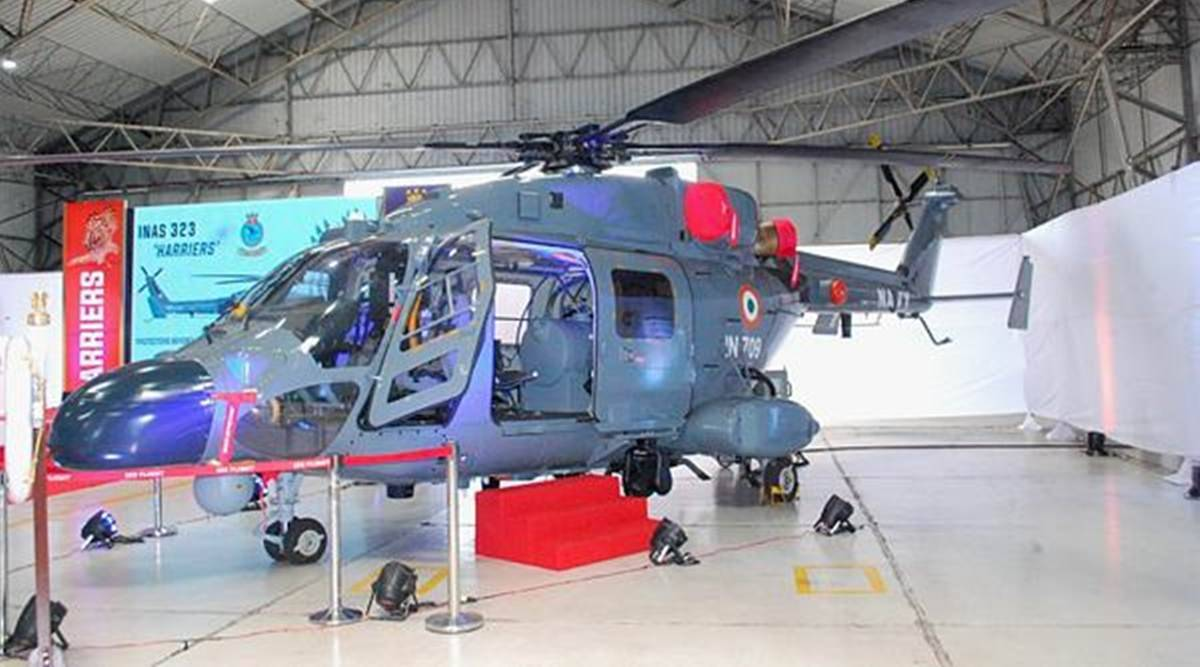 Key Points
Key Points
- About:
- The indigenously designed and developed Advanced Light Helicopter (ALH-DHRUV) is a twin engine, multi-role, multi-mission new generation helicopter in the 5.5 ton weight class.
- It is a multi-role chopper with the Shakti engine manufactured by Hindustan Aeronautics Limited (HAL).
- HAL is an Indian state-owned aerospace and defence company, headquartered in Bangalore, India. It is governed under the management of the Ministry of Defence.
- HAL conceptualised the Advanced Light Helicopter programme in 1984. The major variants of Dhruv are classified as Dhruv Mk-I, Mk-II, Mk-III & Mk-IV.
- Features:
- The aircraft, a step up from Mk 1, will be able to mitigate low visibility during search and rescue operations even at night.
- It has a 0.7 mm gun, which will give a huge capability from a LIMO (low intensity maritime operations) standpoint.
- The automatic flight control system is hugely superior to the previous one.
- Role:
- The Mk III version of the ALH has an all glass cockpit and will be used for search and rescue, special operations and coastal surveillance.

